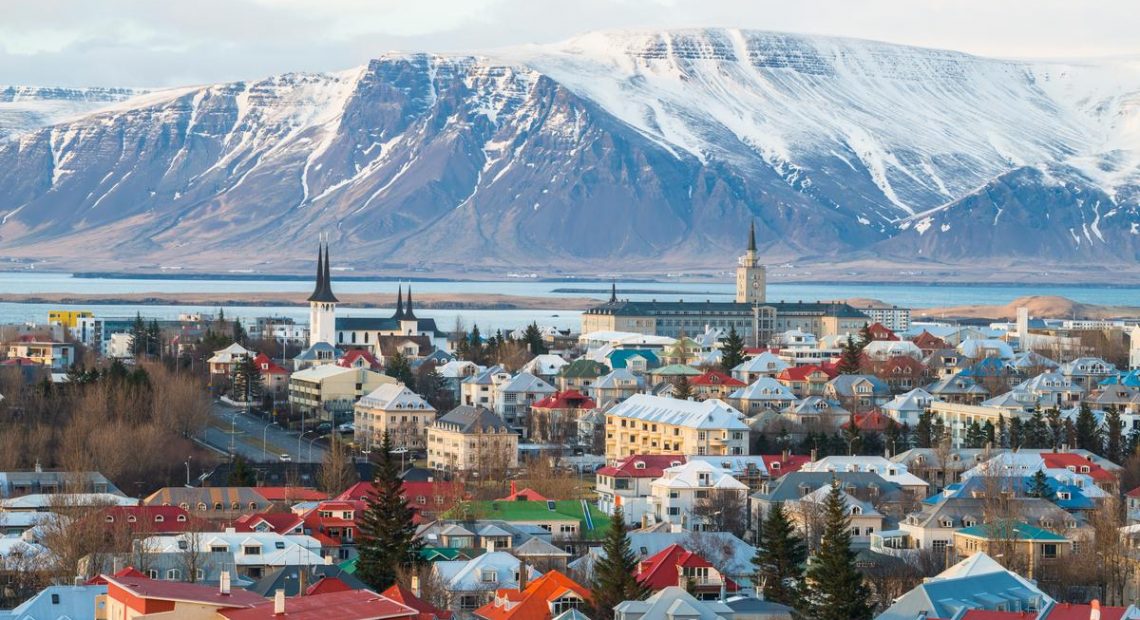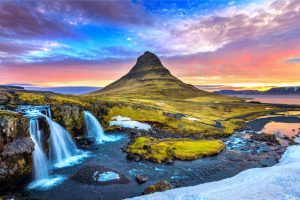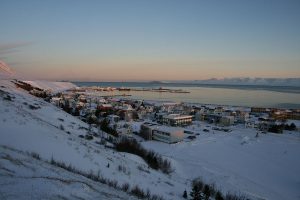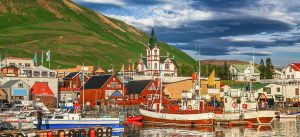ESCAPE TO THE NOMADIC EDGE OF THE WORLD – ICELAND

Iceland also known as the “The Land of Fire and Ice”, has some of Europe’s largest glaciers and some of the world’s most active volcanoes. The country’s stunning glaciers, roaring waterfalls, and dramatic natural nighttime shows are just a few of the reasons why visitors go to the edge of the earth. There are numerous traits that distinguish this country.
One of the reasons for Iceland’s beauty is that it has remained remarkably unaffected by human activity. Much of this country is unsuitable for human habitation: For example, the glacier Vatnajökull covers around 8% of Iceland’s landmass. Also, putting a residence near the base of an active volcano is not a good idea!
As a result, Iceland’s population density is around 8 persons per square mile (or 3 people per kilometre). The majority of Icelanders live in cities, as they do in many sparsely populated countries: Reykjavik is home to nearly a third of the country’s population.

Iceland is one of the most interesting nature-oriented destinations to visit, despite the fact that the weather and seasons change dramatically throughout the year. As a result, there is incredible natural beauty to behold throughout the year. Summer brings the midnight sun, while winter brings the breathtaking Northern Lights; spring and autumn deliver everything in between.
Experiential opportunities that are offered in December may not be available in June, and vice versa. The midnight sun, watching puffins, generally higher temperatures, camping, and other activities are all available in June. December, on the other hand, delivers the Northern Lights, ice cave excursions, lovely holiday twinkling lights, and more. There is no single season that contains all of the adventure and relaxing activities. In every season, there is definitely something for everyone.
Icelandic has been spoken in Iceland since the country’s settlement in the 9th century, and it has remained relatively unchanged since then. It was primarily the language spoken by the Nordic people throughout the Middle Ages in the Nordic countries, as well as in parts of England, Ireland, Scotland, including the Shetland Islands, Orkney Islands, and the Hebrides, and parts of France and Russia, as well as as far south as Constantinople. Lithuanian, Portuguese, Filipino, Thai, and Latvian are among the other languages spoken in Iceland.
One of the Oldest Democracies in the World
Ancient Greek, Roman, and Icelandic democracies are examples of great democracies. Iceland has the world’s oldest still-functioning parliament, which not everyone is aware of.
You will ultimately come to Þingvellir (Thingvellir) National Park if you travel around the Golden Circle. Its breathtaking scenery is a UNESCO World Heritage Site. It is significant not only because the North American and Eurasian tectonic plates collide here, but also because of its historical significance.
Known to be the Safest Country in the World
You may already be aware of this, but it’s worth mentioning again and again.
You don’t have to be concerned about violent crimes in Iceland. This is due to the fact that the country has one of the lowest crime rates in the world. It has led the list of safest countries for almost a decade. Also, did you know that Iceland is the only NATO member without a standing army?

This is due to a number of causes, including a higher sense of equality among the populace, which is aided by the town’s modest size of just over 333,000 people. There’s a sense that everyone knows each other, which must increase mutual trust.
Spend Night in a Farm House
Spending a night in one of Iceland’s many farm-stays is another excellent opportunity to gain a true sense of the country’s culture. A large number of farms give travellers bed and breakfast accommodations. From simple shared rooms to individual huts and cottages, farm stays provide something for everyone. It’s also worth noting that food derived from the surrounding area is generally always available.
Many farms now provide horseback riding excursions and guided hikes, with some even allowing you to participate in farm activities. Remember that booking a farm vacation in advance is always a good idea, especially if you want to get the best deal on lodging.
See the Northern Lights
One of the most compelling reasons to visit Iceland in the winter is to see the Northern Lights. From late September to early April, you may view them across much of the country on a clear night. It’s crucial to realise, though, that seeing them is never a guarantee because they’re a natural phenomena.
If you want to see the Northern Lights, plan on spending at least a couple of days in the country. It’s best to travel as far as possible outside of the city limits: The glowing lights will appear more brightly if there is less light pollution.
The Northern Lights may be seen from Pingvellir National Park, which is noted for its stunning views.
Whale Watching
Iceland could very well be one of the top whale-watching destinations on the planet. In fact, Keiko from Free Willy, the whale-ultra-celeb, was taken in Iceland’s Reyarfjörur Fjord. Keiko was a Killer Whale, but there are roughly eleven other species that can be seen all year.
Although whales may be seen all along the coast, there are three spectacular spots where whale watching cruises can be taken. Húsavík is Iceland’s most popular whale-watching spot. The population of this small village is only 182, and it is surrounded by rolling green hills. Make a point of visiting the Whale Museum while you’re there. Eyjafjörur is Iceland’s longest fjord, and Reykjavik, the capital, has a cheerful, vibrant atmosphere.

Whales can be seen in Iceland at any time of year, but the best time to watch them is during the summer (June-September), when the warm oceans are teeming with krill and fish. June to August is the busiest season, so make your reservations early.
Gaze in Awe at the Many Waterfalls
Iceland is famed for its breathtaking landscapes, with over 10,000 of them featuring waterfalls. From the 3 metre (9 foot) tall Bruarfoss to the 240 metre Morsi Waterfall, there is something for everyone (787 foot). A visit to Iceland isn’t complete without taking in these breathtaking sights.
Skogafoss waterfall, with its vibrant green banks, may be familiar to you from the Walter Mitty film. Seljalandsfoss waterfall has a watery curtain behind which you can peek to see what secrets it holds, whereas Gullfoss is a massive classic two-tiered waterfall.
Want to See More? Get Packing!
Iceland’s wildness is unique in that it is usually untouched and unspoiled. It is our collective responsibility as Icelanders and visitors to do everything we can to keep it that way.
During your travel to Iceland, be mindful of Mother Nature. Always stay on authorised trails, do not cross ropes, camp in designated campgrounds, and pack out your waste. As a result, future generations will be able to enjoy the breathtaking scenery of Iceland’s island!
Pic Courtesy: google/ images are subject to copyright








